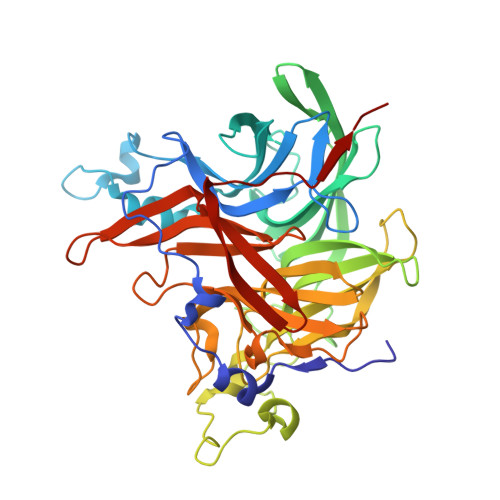The Structure of Sucrose-Soaked Levansucrase Crystals fromErwinia tasmaniensisreveals a Binding Pocket for Levanbiose.
Polsinelli, I., Caliandro, R., Demitri, N., Benini, S.(2019) Int J Mol Sci 21
- PubMed: 31877648
- DOI: https://doi.org/10.3390/ijms21010083
- Primary Citation of Related Structures:
6RV5 - PubMed Abstract:
Given its potential role in the synthesis of novel prebiotics and applications in the pharmaceutical industry, a strong interest has developed in the enzyme levansucrase (LSC, EC 2.4.1.10). LSC catalyzes both the hydrolysis of sucrose (or sucroselike substrates) and the transfructosylation of a wide range of acceptors. LSC from the Gram-negative bacterium Erwinia tasmaniensis (EtLSC) is an interesting biocatalyst due to its high-yield production of fructooligosaccharides (FOSs). In order to learn more about the process of chain elongation, we obtained the crystal structure of EtLSC in complex with levanbiose (LBS). LBS is an FOS intermediate formed during the synthesis of longer-chain FOSs and levan. Analysis of the LBS binding pocket revealed that its structure was conserved in several related species. The binding pocket discovered in this crystal structure is an ideal target for future mutagenesis studies in order to understand its biological relevance and to engineer LSCs into tailored products.
Organizational Affiliation:
Bioorganic Chemistry and Bio-Crystallography laboratory (B2Cl), Faculty of Science and Technology, Free University of Bolzano, Piazza Università 5, 39100 Bolzano, Italy.


















